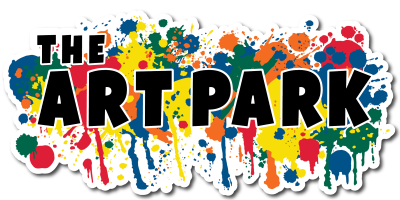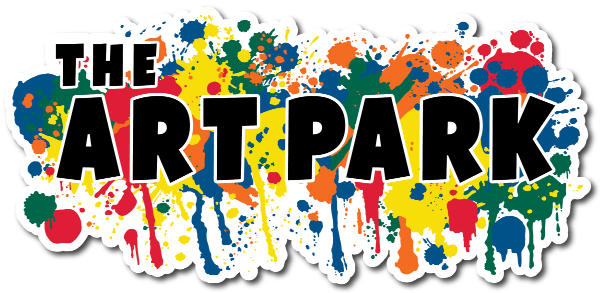Teaching your children about art is a good idea—here’s why:
- It’s been proven that early exposure to visual art, music, or drama promotes activity in the brain.
- Art helps children understand other subjects much more clearly—from math and science, to language arts and geography.
- Art nurtures inventiveness as it engages children in a process that aids in the development of self-esteem, self-discipline, cooperation, and self-motivation.
Participating in art activities helps children to gain the tools necessary for understanding human experience, adapting to and respecting others’ ways of working and thinking, developing creative problem-solving skills, and communicating thoughts and ideas in a variety of ways.
Art is everywhere. Our appreciative mind recognizes every form of art in the world we live in. It is not just acknowledging the beauty of an object, a poem or a painting, it is recognizing and accepting anything we see as art.
Art is an important part of our lives, as it stimulates our mind. It gives us the opportunity to explore our creative side. Art in any form entertains, informs, educates and enlightens us in every possible way. It gives us the meaning of everything we see around us. Without art, our lives would simply become plain, boring and lifeless. Art is an expression of one’s self. Through art, we can express our emotions, such as happiness, love, sadness or grief. It is our medium to share our hidden talents, and for the world to know how creative we are.
The Benefits of Clay
Children that are old enough to squeeze your finger can squeeze a piece of soft clay or dough. As the child squeezes the clay a changes take place – they are learning that their actions have consequences. This is empowerment and encourages more experimentation. The child’s brain is taking shape along with the clay. Such self-initiated activity can be the perfect match for the developmental needs of the child. Clay stimulates the child’s curiosity; intelligence, imagination, and creativity are engaged and fostered. Many new neurons and synapses in the brain are being generated when a child is engaged by the immediate tactile and visual feedback provided by clay.
Manipulating a piece of clay develops the child’s large and small muscles in their fingers, hands and arms which will be needed for proper pencil grip and writing. Clay play fosters eye-hand coordination, imaginary play and encourages emotional expression. Clay is so fascinating that some children work for long periods without any adult motivation to maintain their interest. Clay is a great way to extend the attention span of young children.
Air-dry clay can be purchased at any local craft store or ordered on Amazon. This clay is great for older children because it will dry hard and can be painted. For younger children homemade soft dough might be a better option. There are dozens of recipes on Pinterest, but below is our favorite, enjoy!
Play dough Recipe
3 cups flour 1 ½ cups salt
3 cups water 2 TBS. cream of tarter
1 TBS. canola oil
Food coloring – for rich colors use cake-frosting dyes. These stain though, so be careful! Food coloring can also be used, add color as you mix ingredients in the pan to avoid staining your hands.
Combine ingredients in a non-stick/Teflon pan. Mix together thoroughly and stir over low-medium heat. The ingredients will form a ball in the middle of the pan. Remove from heat. Knead and store in an airtight container, refrigeration is not necessary. The dough will last for weeks if handled with clean hands.
Stress-related hormone cortisol lowers significantly after just 45 minutes of art creation
Whether you’re Van Gogh or a stick-figure sketcher, a Drexel University study found that making art can significantly reduce stress-related hormones in your body. Although the researchers from Drexel’s College of Nursing and Health Professions believed that past experience in creating art might amplify the activity’s stress-reducing effects, their study found that everyone seems to benefit equally.
“It was surprising and it also wasn’t,” said Girija Kaimal, EdD, assistant professor of creative arts therapies. “It wasn’t surprising because that’s the core idea in art therapy: Everyone is creative and can be expressive in the visual arts when working in a supportive setting. That said, I did expect that perhaps the effects would be stronger for those with prior experience.”
The results of the study were published in Art Therapy under the title “Reduction of Cortisol Levels and Participants’ Responses Following Art Making.” Kendra Ray, a doctoral student under Kaimal, and Juan Muniz, PhD, an assistant teaching professor in the Department of Nutrition Sciences, served as co-authors.
“Biomarkers” are biological indicators (like hormones) that can be used to measure conditions in the body, such as stress. Cortisol was one such hormone measured in the study through saliva samples. The higher a person’s cortisol level, the more stressed a person is likely to be.
For Kaimal’s study, 39 adults, ranging from 18 to 59 years old, were invited to participate in 45 minutes of art-making. Cortisol levels were taken before and after the art-making period. Materials available to the participants included markers and paper, modeling clay and collage materials. There were no directions given and every participant could use any of the materials they chose to create any work of art they desired. An art therapist was present during the activity to help if the participant requested any.
Of those who took part in the study, just under half reported that they had limited experience in making art. The researchers found that 75 percent of the participants’ cortisol levels lowered during their 45 minutes of making art. And while there was some variation in how much cortisol levels lowered, there was no correlation between past art experiences and lower levels. Written testimonies of their experiences afterward revealed how the participants felt about the creating art. “It was very relaxing,” one wrote. “After about five minutes, I felt less anxious. I was able to obsess less about things that I had not done or need to get done. Doing art allowed me to put things into perspective.”
However, roughly 25 percent of the participants actually registered higher levels of cortisol — though that wasn’t necessarily a bad thing.
“Some amount of cortisol is essential for functioning,” Kaimal explained. “For example, our cortisol levels vary throughout the day — levels are highest in the morning because that gives us an energy boost to us going at the start of the day. It could’ve been that the art-making resulted in a state of engagement in the study’s participants.” Kaimal and her team believed, going into the study, that the type of art materials used by participants might affect cortisol levels. They thought that the less-structured mediums — using clay or drawing with markers — would result in lower cortisol levels than the structured — collaging. That, however, wasn’t supported by the results, as no significant correlation was found.
The study did find a weak correlation between age and lower cortisol levels. Younger participants exhibited consistently lower cortisol levels after they’d created art. Those results made Kaimal wonder about how young college students and high school students deal with the stress that comes from academia — and how creative arts can help. “I think one reason might be that younger people are developmentally still figuring out ways to deal with stress and challenges, while older individuals — just from having lived life and being older — might have more strategies to problem-solve and manage stress more effectively,” Kaimal said. In light of that, Kaimal plans to extend the study to explore whether “creative self- expression in a therapeutic environment can help reduce stress.” In that study, other biomarkers like alpha amylase and oxytocin will also be measured to give a more comprehensive picture.
Additionally, Kaimal also plans to study how visual arts-based expression affects end-of-life patients and their caregivers.
“We want to ultimately examine how creative pursuits could help with psychological well-being and, therefore, physiological health, as well,” she said.
–Drexel UniversityJune 15, 2016


